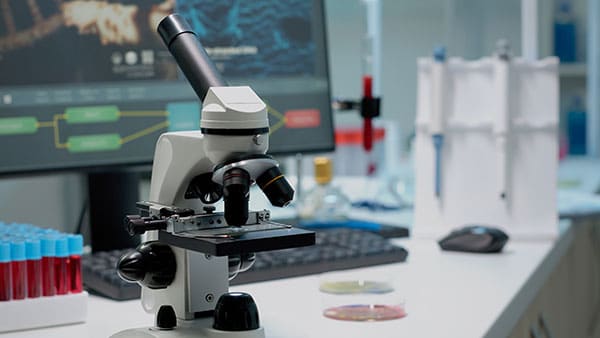The Advanced Research Projects Agency for Health (ARPA-H) stands as a beacon for those within the biomedical and health sectors, propelling transformative research initiatives and breakthroughs. The pursuit of funding from ARPA-H is a monumental stride for entities operating in these domains. This guide endeavors to navigate you through the intricate application process, the financial prerequisites, and the technical stipulations pivotal for securing ARPA-H funding.
The Formation of ARPA-H
ARPA-H was approved by Congress in 2022. It emerges as a pioneering entity within the realm of biomedical research, owing its genesis to the visionary ambitions of the U.S. government. Born out of a lineage tracing back to the groundbreaking initiatives of DARPA (Defense Advanced Research Projects Agency) and building upon the success stories of ARPA-E (Advanced Research Projects Agency-Energy), ARPA-H represents a concerted effort to revolutionize healthcare and biomedicine. The proposal for ARPA-H germinated as part of discussions surrounding the need for an agency dedicated to advancing health research, akin to DARPA’s impact on defense technology.
The quest was to harness cutting-edge innovation and breakthroughs, fostering transformative research endeavors targeting health and biomedical challenges. Established as a strategic component of the National Institutes of Health (NIH), ARPA-H was envisioned to be an engine of innovation, fostering interdisciplinary collaborations, and pushing the boundaries of scientific exploration to bring about revolutionary breakthroughs in health and medicine. Its inception heralds a new chapter in the pursuit of addressing pressing health concerns through visionary research and technological innovation.

ARPA-H Vision and Objectives
The objectives of ARPA-H, based on proposed discussions and intentions, revolve around catalyzing innovative research to revolutionize health and biomedical sciences. While the specifics might evolve as the agency grows and develops, some key objectives include:
- Catalyzing Breakthroughs: ARPA-H aims to drive transformative breakthroughs in health and medicine, fostering revolutionary advancements that address pressing healthcare challenges. This might involve leveraging cutting-edge technologies, interdisciplinary approaches, and out-of-the-box thinking to accelerate progress.
- Interdisciplinary Collaboration: Encouraging collaboration across disciplines is a pivotal objective. ARPA-H aims to bridge gaps between various scientific fields, bringing together experts from diverse backgrounds to tackle complex health issues with fresh perspectives and innovative solutions.
- Rapid Translation of Research: An emphasis on swiftly translating research findings into tangible solutions for patients and healthcare systems is likely a key focus. ARPA-H might aim to streamline the translation of scientific discoveries into practical applications, ensuring that breakthroughs reach those who need them efficiently.
- Fostering Innovation Culture: Creating an environment conducive to innovation and risk-taking in the realm of health research is another objective. This might involve supporting high-risk, high-reward projects that have the potential to bring about transformative changes in healthcare.
- Addressing Long-term Health Challenges: ARPA-H might prioritize tackling long-standing health challenges that require innovative approaches. This could encompass areas such as precision medicine, disease prevention, novel therapeutics, diagnostics, and healthcare delivery systems.
Public-Private Partnerships: Collaborating with both public and private sectors to leverage resources, expertise, and infrastructure is likely an objective. ARPA-H might seek to create partnerships that amplify the impact of research efforts and facilitate the translation of discoveries into real-world applications.
The Application Process
Identifying a Relevant ARPA-H Program: The cornerstone of initiating the application process is pinpointing a pertinent ARPA-H initiative. These arise periodically through Broad Agency Announcements (BAAs), delineating specific research domains earmarked for funding. These documents furnish comprehensive insights into technical, financial requisites, and evaluation benchmarks. Aligning your pursuits with an ARPA-H funding opportunity that resonates with your research ethos and capabilities is crucial.
Preparing a Proposal
Crafting a proposal involves two primary facets—a technical proposal and a cost proposal. The technical rendition should intricately detail the project’s landscape, encompassing objectives, methodologies, timelines, and anticipated outcomes. Conversely, the cost proposal mandates a comprehensive and pragmatic budget in alignment with the project blueprint. This budget should encompass all conceivable expenses—from personnel remunerations to equipment, materials, and overhead costs.
Proposal Evaluation
ARPA-H undertakes a merit-based assessment, evaluating proposals on technical merit, potential impact, and cost-effectiveness.
Negotiation and Award Acceptance
Should your proposal be chosen for funding, the subsequent phase involves negotiations and acknowledging the award. This involves finalizing the budgetary framework and the terms and conditions of the award. Upon consensus, a Notice of Award (NoA) formally inaugurates your project.
Financial Requirements
The financial prerequisites for ARPA-H funding are exacting, necessitating a meticulous approach in the Cost Proposal—an imperative facet mandated for all proposers, including Federally Funded Research and Development Centers (FFRDCs). The requisites encompass:
- Budgetary Framework: A comprehensive budget proposal delineating the fund utilization stands as a foundational requisite. This entails direct costs (e.g., personnel, equipment, supplies) alongside indirect costs (e.g., overhead, administrative expenses).
- Supporting Cost and Pricing Data: Substantiating the budget with comprehensive cost and pricing data is imperative. This encompasses an intricate breakdown of total program costs by major cost items and tasks, encompassing direct labor, sub-agreements, materials, overhead charges, and more.
- Additional Documentation: Proposers must incorporate any ancillary mandated documents, such as OCI disclosures, OCI mitigation plans, small business subcontracting plans, intellectual property representations, and assertions.
Technical Requirements
The technical requisites mandated for ARPA-H funding are meticulously curated to ensure alignment with ARPA-H’s mission and objectives:
- Proposal Summary: This section functions as the crux, housing the technical rationale, approach, and the roadmap for accomplishing set technical milestones. It should spotlight the innovative aspects of the proposed research, articulating its uniqueness and the benefits relative to existing approaches. Furthermore, it should elucidate deliverables, technology transition, and commercialization plans.
- Technical Blueprint: Commencing with a Statement of Work (SOW) that lucidly defines technical tasks/subtasks, their durations, and dependencies, the technical plan should encompass descriptions of results, products, transferable technology, and expected technology transfer pathways.
- Capability Assessment: Demonstrating the technical and managerial prowess essential for project execution is paramount. This necessitates showcasing a qualified team endowed with requisite skills and experience, coupled with suitable facilities and equipment.
- Regulatory Adherence: Projects entailing human subjects, animals, or hazardous materials mandate stringent compliance with relevant regulations. This includes procuring necessary approvals and ensuring ethical considerations are diligently met.

ARPA-H 2023 Programs & Projects
The Consolidated Appropriations Act, 2023, allocated $1.5 billion to ARPA-H, a $500 million increase over the FY 2022 enacted level. In 2023, ARPA-H made an impact with the following projects and programs:
NITRO (May 2023)
The Biden Administration launched the first program under its newly-established Advanced Research Projects Agency for Health (ARPA-H) agency: the Novel Innovations for Tissue Regeneration in Osteoarthritis (NITRO). NITRO seeks to develop new ways of helping the human body repair its own joints, with the goal of revolutionizing treatment for osteoarthritis — a common and often very painful condition where bones and cartilage break down. The program is the first of several that ARPA-H intends to launch this year, each aiming to drive breakthroughs that deliver on President Biden’s commitment to improve health outcomes by tackling tough problems in a range of conditions, such as cancer, Alzheimer’s Disease, and diabetes.
Precision Surgical Interventions Program (July 2023)
ARPA-H’s new Precision Surgical Interventions (PSI) program was launched to deliver groundbreaking new tools to enable surgeons to successfully remove cancer for patients through a single operation by better identifying and differentiating between healthy and cancer tissue. Technologies developed through this program will also help surgeons spot and avoid important structures such as nerves, blood vessels, and lymph nodes, which can be mistakenly damaged during invasive surgical procedures. In alignment with the Biden Cancer Moonshot and to advance equity, the PSI program is designed to ensure emerging technologies that are accessible in rural and urban areas, improving health outcomes for all Americans facing cancer.
DIGIHEALS (Launched in August 2023, Awards Made in September 2023)
In August 2023, the launch of the Digital Health Security (DIGIHEALS) aimed to ensure patients continue to receive care in the wake of a widespread cyberattack on a medical facility — like those that have caused hospitals to close their doors permanently.
By focusing on cutting-edge security protocols, vulnerability detection, and automatic patching, this effort seeks to reduce the ability of bad actors to attack digital health software and enable the prevention of large-scale cyberattacks. In addition to addressing cybersecurity vulnerabilities, the project aims to identify and fix software-related weaknesses that affect patient safety and experience.
In October 2023, the Biden-Harris Administration announced up to $50 million in funding for six contract awards through the DIGIHEALS project. The projects undertaken through these contract awards will seek to advance technologies that address vulnerabilities in securing healthcare data, such as automated medical device patching, ransomware intervention, cognitive health assistants for better data organization, cyber reasoning techniques, and electronic health record consolidation.
The six DIGIHEALS contract awardees include a mix of universities and companies from across the country—including Annandale, Virginia; Menlo, California; Tempe, Arizona; San Diego, California; and Woburn, Massachusetts —that work on technologies ranging from artificial intelligence to cybersecurity and cutting-edge analysis.
CUREIT (August 2023)
ARPA-H announced up to $24 million for Curing the Uncurable via RNA-Encoded Immunogene Tuning (CUREIT), a project that aims to train the immune system to better fight cancer and other diseases with the goal of developing generalizable mRNA platforms to treat diverse diseases and save lives. CUREIT will be led by a team at Emory University in Atlanta, Georgia.
The proposed CUREIT toolbox of mRNA – a molecule that tells the body what proteins to make – and related technologies could be used to “turn on” helpful immune responses, like prompting immune cells to target and attack tumors. Other applications could extend to autoimmune disorders, transplants, and infectious diseases.
CUREIT was the first award from the ARPA-H Open BAA, which seeks transformative ideas for health research breakthroughs or technological advancements
Biomedical Data Fabric Toolbox (September 2023)
The Biden-Harris Administration announced a new ARPA-H program to make medical research findings easier to use to improve health outcomes for Americans. The ARPA-H Biomedical Data Fabric Toolbox, a project that will thread together research data across the country to help the scientific community find and share medical insights more easily, so that we break down data research siloes, learn from the experiences of more patients, and deliver health solutions to people more quickly.
The ARPA-H Biomedical Data Fabric Toolbox will consolidate research from a variety of health disciplines into a common language to resolve the inconsistencies in how research data is currently stored and allow researchers to incorporate data in new ways that accelerate health innovations
ARPA-H will initially partner with HHS agencies including the National Cancer Institute (NCI), National Center for Advancing Translational Sciences (NCATS), and the National Institute on Drug Abuse (NIDA) within the National Institutes of Health (NIH), Food and Drug Administration (FDA), and the Office of the National Coordinator (ONC) to guide the development and application of new approaches to incorporating unique data assets into emerging research that spans the entire health care sector.
By pursuing intentionally aggressive goals, this effort will challenge the computer science and biomedical research communities to develop new search capabilities and uncover gaps that require further research, all while protecting patient privacy. For example, the ARPA-H Toolbox will make it easier to search across multiple types of data and retrieve more complete results, including by scoring how well the data represents the patient population.
Cancer Moonshot Funding (September 2023)
To advance President Biden’s Unity Agenda, the Biden-Harris Administration announced nearly $115 million in new funding for cutting-edge research projects in support of Cancer Moonshot objectives. Three major projects funded under agreements with ARPA-H for radical new ways to detect and treat cancer. These research projects represent the Agency’s commitment to supporting Cancer Moonshot℠ goals of decreasing cancer deaths and improving the quality of life for patients.
Two of the awards will work toward the development of new ways to treat cancer. Rice University in Houston, Texas plans to develop a minimally invasive implant to sense and respond with specific doses of medicine to help the body better respond to cancer treatments. With up to $45 million to support the research, the team will seek to develop the Targeted Hybrid Oncotherapeutic Regulation (THOR) platform, a groundbreaking method to help boost cancer therapy response rates in peritoneal and solid tumors.
The Synthetic Programmable bacteria for Immune-directed Killing in tumor Environments (SPIKEs) project, led by a team at the University of Missouri in Columbia, Missouri, aims to develop an inexpensive and safe therapy using bacteria specifically selected for tumor-targeting. Through SPIKEs, researchers intend to engineer bacteria that can recruit and regulate tumor-targeting immune cells, boosting the body’s ability to fight off cancer without side effects from traditional medications. Up to $19 million is allocated towards SPIKEs.
An additional project, with up to $50 million in potential funding inclusive of options, seeks to map cancer cell biomarkers to drastically improve multi-cancer early detection (MCED) and streamline clinical intervention when tumors are still small. Led by the Georgia Institute of Technology in Atlanta, Georgia, the Cancer and Organ Degradome Atlas (CODA) project aims to understand the cellular profiles unique to diseased cancer cells. The CODA platform intends to develop a suite of biosensor tools that can reliably recognize a range of cancer-specific markers and, ultimately, produce a highly precise, accurate, and cost-effective MCED test that can identify common cancers when they are most treatable.

ARPANET-H (September 2023)
ARPA-H announced the launch of ARPANET-H, a nationwide health innovation network anchored by three ARPA-H regional hubs. The hubs will be mission-focused, regional centers with a growing network of spokes from around the country representing the diversity of people, settings, and capabilities that encompass the American health ecosystem.
Together, the hubs and spokes will collaborate with ARPA-H to catalyze game-changing breakthroughs in science and medicine that improve health outcomes. ARPANET-H will enable health problems to be solved faster, with accessible, equitable solutions reaching the American public more quickly. The network advances President Biden’s Unity Agenda by driving innovation of new ways to prevent, detect, and treat for cancer, Alzheimer’s, diabetes, and other diseases.
The three hubs of ARPANET-H will lead specific focus areas, including streamlining customer experiences, catalyzing investors, and developing stakeholder and operations efforts.
The Customer Experience hub will focus on developing health solutions that will be accessible, needed, and readily adopted. It will take a proactive approach to diversify clinical trials, reach representative patient populations, and more leading to better and more equitable health outcomes for all. This hub’s physical location will be located in Dallas, Texas.
The Investor Catalyst hub will focus on speeding the transition of innovative ideas into practical, accessible solutions that deliver for Americans by engaging with researchers, entrepreneurs, and investors. This hub’s physical location will be located in Cambridge, Mass., in the greater Boston area.
The Stakeholder and Operations hub will be adjacent to many intergovernmental partners and stakeholders. Following a competitive review, ARPA-H will select the final site located in the National Capital Region, using federal leasing and acquisition procedures.
Concluding a competitive process, ARPA-H has selected two Consortium Management Firms as awardees to operate the Customer Experience and Investor Catalyst hubs. Advanced Technology International will manage the Customer Experience hub. VentureWell will manage the Investor Catalyst hub. ARPA-H will operate the Stakeholder and Operations hub directly. The period of performance for each hub is five years, consisting of a one-year base and four one-year options.
At launch, initial spokes* reflect a broad range of expertise, community voices, and areas of the country. The spoke network will be dynamic, representing all 50 states, many territories, and tribal nations and the network will continue to evolve to meet the needs of ARPANET-H. Each spoke will provide a unique capability complementary to its associated hub, and each hub will recruit and work collaboratively with its spokes to maximize their effectiveness. For example, a spoke could be a rural hospital or an urban community health center, helping ensure that advances made are accessible and affordable to everyone.
*Some of the initial ARPANET-H spokes include:
- Southern Research (Birmingham, Alabama)
- Mountain Pacific (Anchorage, Alaska)
- National Resilience, Inc. (San Diego, California)
- UCHealth CARE Innovation Center (Aurora, Colorado)
- Orlando Health (Orlando, Florida)
- Mayo Clinic Platform (Rochester, Minnesota)
- Cherokee Nation Health Service (Tahlequah, Oklahoma)
- University City Science Center (Philadelphia, Pennsylvania)
- Access to Advanced Health Institute (Seattle, Washington)
- University of Wisconsin Milwaukee (Milwaukee, Wisconsin)
Award to Address Antimicrobial Resistance (September 2023)
ARPA-H awarded a new project to combat the growing threat of antibiotic-resistant bacteria. Bacterial infections remain a leading cause of death worldwide and more than 2.8 million antimicrobial-resistant infections occur each year in the United States, causing more than 35,000 deaths. These infections also further prolong hospital stays and increase healthcare costs.
To combat this crisis, ARPA-H is funding through its Open Broad Agency Announcement (Open BAA) the Defeating Antibiotic Resistance through Transformative Solutions (DARTS) project. DARTS focuses on developing a set of diagnostic and experimental platforms that can reveal insights into how antibiotic resistance starts, search for new antibiotics, and rapidly identify the right antibiotic to prescribe for a particular infection in real-time.
This initiative complements activities funded by other federal research and development agencies by taking a unique approach to developing an ultra-high-speed screening system that analyzes billions of bacteria individually. The technology, if successful, could rapidly identify bacteria that can evade antibiotic treatments and quickly find the right compound to treat a specific infection. The goal is to create a platform that can be easily employed at any hospital or clinic and would advance U.S. government efforts on surveillance and stewardship.
DARTS will aid in the stewardship of current antibiotics helping to ensure that patients get the antibiotics they need and not ones that they do not need. This is a critical component of the strategy to preserve the effectiveness of antibiotics over time and slow resistance to these drugs. The DARTS project further aims to serve as a rapid platform for the discovery of new antibiotics from natural samples. Harvard Medical School in Cambridge, Massachusetts leads the multi-institution research team under an agreement of up to $104 million.
Award to Address Organ Transplant Shortages (September 2023)
ARPA-H awarded up to $26 million for a newly funded project, part of its Open BAA, that aims to lay the groundwork for the development of 3D-printed, fully functional human organs. There are currently more than 100,000 people in the United States who are waiting for organs, such as hearts or kidneys, and tragically, more than 6,000 of these patients die each year due to lack of access to compatible organs. That number is in addition to the millions of Americans who need tissue – including corneas, skin, and cartilage – for grafts and transplants that could save or improve their lives
ARPA-H is taking a groundbreaking step in addressing this critical gap by launching the Health Enabling Advancements through Regenerative Tissue Printing (HEART) project with the goal of 3D-printing organs on demand, beginning with a human heart. Researchers at Stanford University in Palo Alto, California will work to improve cell purity, accelerate 3D bioprinting speed, and advance computation modeling and tissue maturation methods to achieve on-demand organ printing.
Award to Resore Immune System Function (September 2023)
ARPA-H awarded up to $37 million in project funding through its Open BAA to restore function to the thymus, an organ responsible for supporting normal immune cell development, and potentially restore immune system function as people age. More than 10,000 new patients are diagnosed each year with a thymus disorder, often related to congenital defects or cancer treatments. More broadly, thymus function naturally declines with age, which can contribute to poorer immune system function, and lead to increased vulnerability to illness and poorer health outcomes.
The Thymus Rejuvenation project, led by Thymmune Therapeutics in Cambridge, Massachusetts, aims to restore damaged or non-functional thymus tissue. Using laboratory methods, scientists can turn cells into different tissue types, eventually growing into functional thymus tissue for a patient, and allowing for a “reboot” of immunity. ARPA-H funding will not only advance the treatment towards clinical development but also aim to effectively treat a broader range of clinical indications related to immune depletion as we age. This effort builds on ARPA-H’s ongoing work to improve health outcomes for all Americans.
REACT Program (September 2023)
ARPA-H launched a program to develop new technologies that will automatically deliver treatments and monitor for disease from within an individual’s body. These technologies will result in improved patient self-care and affordability of long-term treatments.
Called Resilient Extended Automatic Cell Therapies (REACT), the program will ease the financial and care management burdens many individuals face in treating or monitoring their chronic condition, such as blood draws, injections, pills, or even surgeries, by developing two platforms: A “Living Pharmacy” to automatically deliver prescribed treatments, and a “Living Sentinel” that allows the individual or their care team to detect key biomarkers of disease.
For individuals living with chronic conditions that require invasive treatments or continuous monitoring, like diabetes, thyroid disease, or obesity, taking medicine and getting treatments on time can be difficult. Populations with health-related social risk factors, such as those living far away from a medical center, are particularly impacted by these barriers. These treatments can also be expensive long-term, sometimes requiring regular injections or multiple surgeries. REACT will build on advances in automated treatment delivery and monitoring to make treatments more readily available, effective, and lower a patient’s long-term disease management costs.
The REACT program will require performers to advance in multiple technical areas, including:
- Supporting viability of the engineered cells for a year inside the device once implanted.
- Developing a manufacturing process for the routine engineering of cells to form a standardized cell line that can either deliver therapies or detect biomarkers.
- Building an implantable bioelectronic device that houses the living cells with the ability to provide secure communications between the patient and carrier, and between the carrier and the engineered cells. Components must be integrated such that recharging is required only once a week.
- Establishing reliable and accurate release of the therapy or accurate tracking of a biomarker for at least one year after implantation.
- Ensuring that the capabilities developed are done so with the safety and security of patients top of mind.
APECx Program (October 2023)
APRA-H launched a research program to develop a computational toolkit that helps design vaccines that target many viruses at once. The program is called the Antigens Predicted for Broad Viral Efficacy through Computational Experimentation, or APECx.
Viruses remain a significant threat to global health and security, causing pandemics, cancers, and chronic illness — yet we lack vaccines for most of these viral diseases. The current methods for vaccine and drug development are often slow and expensive, due in part to an incomplete understanding of a virus protein’s structure and function, leading to years of research that is targeted narrowly to one virus.
To accomplish genus- and family-level vaccine development, APECx will leverage emerging computational innovations coupled with high-throughput biochemical and immunological data generation on a scale that has not been approached before. ARPA-H is emphasizing collaboration across academia and industry to accelerate these discoveries with unique tools that have yet to be tested for vaccine development.
APECx intends to test and evaluate the best mechanisms for sharing data and creating accessible toolkits and aims to significantly lessen health burdens on people, healthcare systems, and the economy. The discovery toolkits developed from APECx, and the resulting vaccine candidates, may have the potential to benefit from other research and development programs currently being led by the National Institute of Allergy and Infectious Diseases, part of the National Institutes of Health, and the Biomedical Research and Development Authority.

Conclusion
The quest for ARPA-H funding encapsulates a journey that demands precision, foresight, and a profound alignment with the agency’s core ethos. Entrusting this pursuit to seasoned consultants like EverGlade Consulting augments the prospects of navigating this terrain with finesse and securing the desired funding for pioneering biomedical and health-related breakthroughs.
For enterprises considering an application for ARPA-H funding, EverGlade Consulting stands as the quintessential ally in realizing this endeavor. With a cohort of adept consulting professionals, EverGlade is poised to support ARPA-H Funding Applications. Their history of shepherding both large corporations and smaller entities in preparing, submitting, and clinching federal funding applications underscores their prowess. Services encompass crafting business plans, formulating financial projections, and assembling comprehensive packages to leverage these exclusive programs. Leveraging their nuanced comprehension of the federal funding milieu, EverGlade fortifies the probability of your proposal’s success.
To explore further details about EverGlade Consulting, visit https://everglade.com/.








